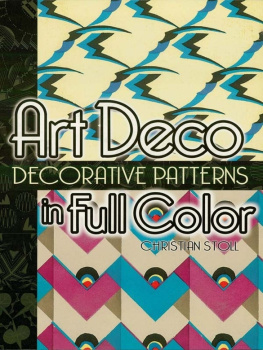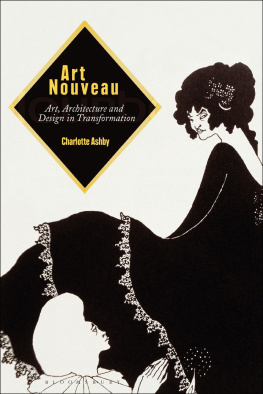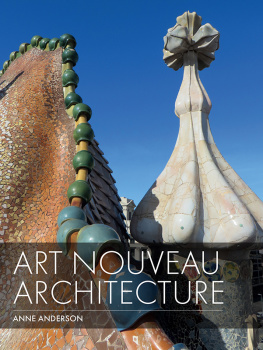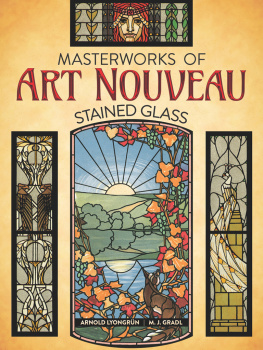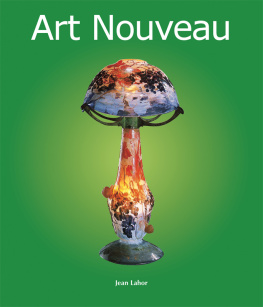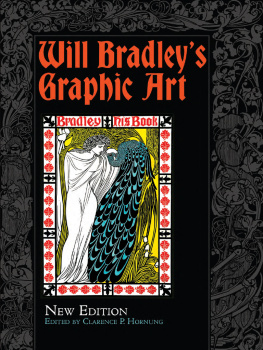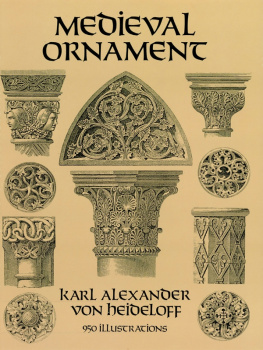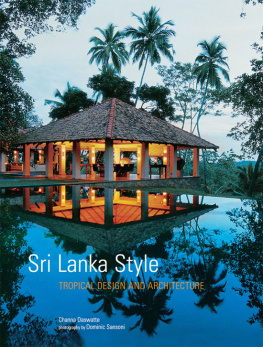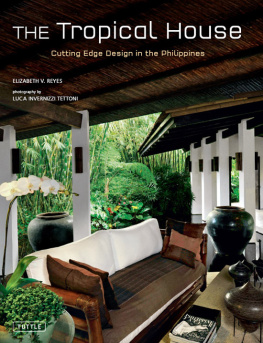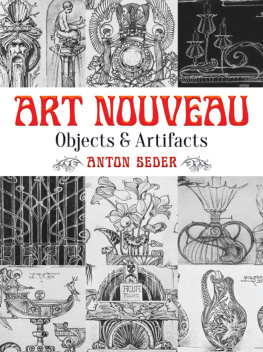
DECORATIVE SKETCHES
Architecture and Design Influenced by Nature in Early 20th-Century Paris
Ren Binet
DOVER PUBLICATIONS, INC.
Mineola, New York
To
GUSTAVE GEFFROY
His grateful friend,
R. Binet
Bibliographical Note
This Dover edition, first published in 2017, is an unabridged republication of sixty plates from Esquisses Dcoratives, originally published by Librairie Centrale des Beaux-Arts, Paris, ca. 1902. The original preface by Gustave Geffroy has been newly translated from the French by Diane Goullard, www.FrenchAndEnglish.com.
Library of Congress Cataloging-in-Publication Data
Names: Binet, Ren, 18661911, creator. | Geffroy, Gustave, 18551926, writer of preface.
Title: Decorative sketches : architecture and design influenced by nature in early 20th-century Paris / Rene Binet.
Description: Mineola, New York : Dover Publications, 2017. | This Dover edition, first published in 2017, is an unabridged republication of sixty plates from Esquisses Dcoratives, originally published by Librairie Centrale des Beaux-Arts, Paris, ca. 1902. The original preface by Gustave Geffroy has been newly translated from the French by Diane Goullard.
Identifiers: LCCN 2017022952| ISBN 9780486816685 (paperback) | ISBN 0486816680
Subjects: LCSH: Binet, Ren, 18661911Themes, motives. | Decoration and ornamentFranceParisArt nouveau. | BISAC: ARCHITECTURE / Decoration & Ornament. | ART / European.
Classification: LCC NK1449.Z9 B562 2017 | DDC 745.092dc23
LC record available at https://lccn.loc.gov/2017022952
Manufactured in the United States by LSC Communications
81668001 2017
www.doverpublications.com
PREFACE
But if they cant understand that parts that are so small that they are unnoticeable can be as divided as the firmament, then there is no better way than to have them look through binoculars that enlarge that delicate speck to an enormous mass. There, they will easily understand that through the medium of another piece of glass, more artistically tailored, one can enlarge it to the point of emulating that very firmament, the vastness of which they admire. These objects now seem to them very easily partitionable, they may remember that nature is infinitely greater than art.
PASCAL: THOUGHTS (Reflections Upon Geometry In General)
... There is such an insect that by day or by night, viewed through the naked eye or under a microscope, would present no interest. But if, with the aid of a scalpel, you took the time, patiently, delicately, to lift from under the thick scaly wings the layers that form it, you would often find some most unexpected designs made of sinuous curves, twig branchlets, angular streaking figures, even hieroglyphics, reminiscent of the alphabet of certain Oriental languages.
... Truly, what is there that is similar or close to, in art? How tired it seems, so languid. How it needs to return to the living source! Habitually, instead of going directly to Nature, to the inexhaustible fountain of beauty and invention, arts have appealed to scholarly knowledge, to the arts of yesteryear, to the past of man.
... Our intelligent Paris merchants, who regrettably followed the paths that large producers imposed upon them, may one day break away from the powerful and rich. Some will have enough of it and, turning their backs on the scribes of old rubbish, they will inquire of Nature itself, the great collections of insects, the greenhouses of the Garden of Plants.
MICHELET: THE INSECT (Renovation of our Arts through the Study of Insects, Ch. VII)
The architect of the main entrance door [Ed.:La Porte Monumental Paris, designed by architect Ren Binet, who incorporated illustrations from Ernst Haeckels work Art Forms in Nature] of the Paris Exposition [Ed.: The Exposition Universelle de 1900, an international exhibition of new technology and cultural innovations, such as Art Nouveau], Ren Binet, is an artist who has an accurate sense of the general evolution of human endeavor. Therefore, he is not publishing this collection intending, overtly or covertly, that it is going to revolutionize the arts of furnishings, bring an expected epiphany, create a buzz, to use a consecrated expression, however irritating and unfit. Fortunately for him, he didnt invent the Binet style. He knows only too well that such a personal fantasy, one that would not pretend to be connected to what preceded it, would run the risk of falling flat. The authors objective is a lot simpler, and completely legitimate. Going through the trouble of carrying on his objective, the effort is necessarily going to be held back, categorized, and used, for the simple reason that it encompasses a great deal of necessary work and that it brings to its performance a spirit of unity and method.
Far from wanting to create a style, Ren Binet, relying on a process closely connected to careful and unassuming data in an experimental spirit, returns, in a way where ingenious invention and learned ingenuousness can be appreciated, to the origin of all styles, to the unchanging principles, those that are absolute and infinitely varied and complex, that determine the essential forms and their many derivations.
Ren Binet became aware that there is a way of escaping from the obsession with all the decorative forms we have inherited in the course of centuries, with all the trials and all the successes that make up todays code of tradition. This means to resort to the large laboratory of Nature, one that is always moving, always producing, never standing still for one instant, having not a single moment where it stops or hesitates. Therein lies the tried-and-true secret of all creation, of all transformation.
No doubt, others have asked its secret of nature. What am I saying? Others! All may not have obtained it, but all have asked, even those who claim to consider it of secondary importance and who substitute it for the genius of their theories. But it is a different matter altogether to peer into art or to question nature. An artist does not need theories to supplement nature, it is enough to want to translate it: inevitably, the artists personality appears, his or her perspective, the way he or she sees, experiences, or understands, seeps through. He confesses his or her intelligence, his emotions, he creates the image residing in his mind, from which he creates his perception of the world. But, while he is thus manifesting a personal creation, he is conceiving a template that others, who dont have his sensitivity and clairvoyance, will merely imitate. They will imitate his discovery while distorting it, and nature will be sieved through the art, losing its native force, its freshness, its vigor, its original grace. This explains one reason why, in the arts applied to everyday subjectsas for other artsthe fading away, the falling from fashion in all forms and all ornamentation that once had their youth and their blossoming. Formulas wilt, become wrinkled, are abraded, die, over the course of a long period during which they decompose, become more complex, and show the pointless, puerile, sad game of their slow demise, in lieu of subtlety and refinement.
This means that every time the sap dries up, every time the sense of things natural becomes scarcer and scarcer, one has to exert a sudden burst of the will and return to the inexhaustible source.
It is into this exertion of a burst of the will that Ren Binet has dipped. He has traveled to the invisible world, to the infinity of the forms revealed by the microscope. He has studied with passionate focus the general characteristics of these forms and the flow of their derivatives. He has learned the perpetual renewal of life that is hidden in the depths of the ocean, all this universe in constant movement, where separate forms constantly emerge from the transitory mixture of mineral life, vegetable life, animal life. In the sixteenth lesson of his
Next page

